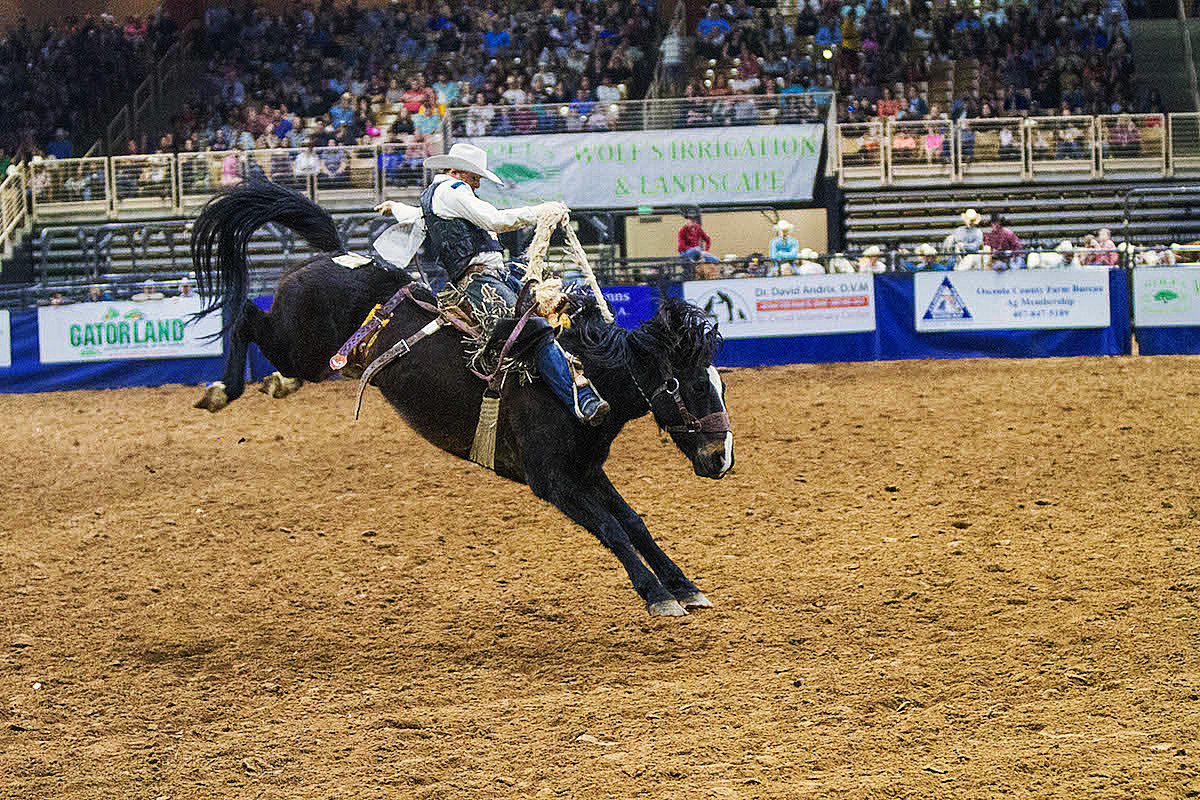
Written by Heather Burns for the Silver Spurs Rodeo website
Bronc riding. The epitome of what we think of when we hear the phrase, “rodeo cowboy”. Like other rodeo events such as team roping and bull riding, bronc riding originated from the ranch lifestyle common during the mid-to-late 1800s. And what was once a way of life has now evolved into one of rodeo’s most beloved events. Bronc riding today has two different events: bareback and saddle. In this blog, we’ll give you the breakdown of the differences between saddle and bareback bronc riding.
Back in the day, cowboys would gather sturdy-looking broncs and try to “break” or tame the wild horse so they could be used on the ranch. The theory was that the more often the horse was ridden, the less they would buck while accepting the rider. This soon became a pillar to the sport of rodeo during the early 1900s. In fact, back in the day, cowgirls rode saddled broncs at rodeos, too! But, after the death of Bonnie McCarroll during a bronc riding event at Oregon’s Pendleton Round-Up in 1929, the Professional Rodeo Cowboys Association (known as the Rodeo Association of America at the time) removed that event.
The first thing you should know about saddle and bareback bronc riding is that both the rider and the horse are scored on their performances. The judges score the bronc primarily based on how smooth or rhythmic the buck is. Similar to how bull riding is scored, the cowboy’s score is based on being able to ride for a full eight seconds, only holding on with one hand, and syncing his movements to the rhythm of the animal. So both the cowboy and the horse can receive a maximum score of 50, totaling to 100 possible points for a perfect ride. One major similarity shared just between saddle and bareback bronc riding is that riders must “mark out” their horses on the first jump from the chute. If the cowboys fail to mark a horse with one or both feet, they’ll receive a “no score”.
The main differences between the two rodeo events goes beyond the saddle and actually changes the difficulty of scoring. For instance, some differences between saddle and bareback bronc riding are that in saddle bronc riding, the rider has a thick rein attached to the horse’s halter to hold on to. But in bareback bronc riding, the rider only has a riggin’, or molded piece of leather that is cinched, with a pad, around the horse’s girth. Surprisingly, because of this difference, there are more possibilities in saddle bronc riding for the rider to become disqualified. Some things that may happen are either losing a stirrup or dropping the riggin’, ultimately resulting in a “no score”.
Another big difference between the two events is in the actual horses used in each event. Saddle broncs are typically several hundred pounds heavier than bareback horses and generally buck in a slower manner. This is one of the main reasons why judges make sure that the rider is able to synchronize with the bronc’s motion. The horses that compete in the bareback bronc event are usually leaner, quicker, and more agile. This is why it’s imperative for a rider to appear like he’s in full control of the horse, by maintaining upper body control and moving his feet in a toes-turned-out rhythmic motion in time with the bronc’s bucking action.
